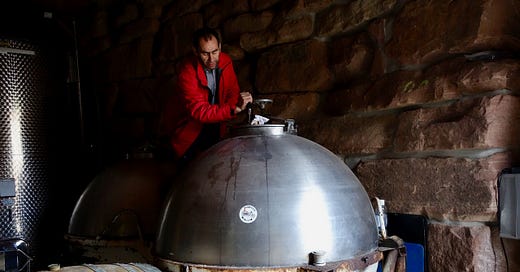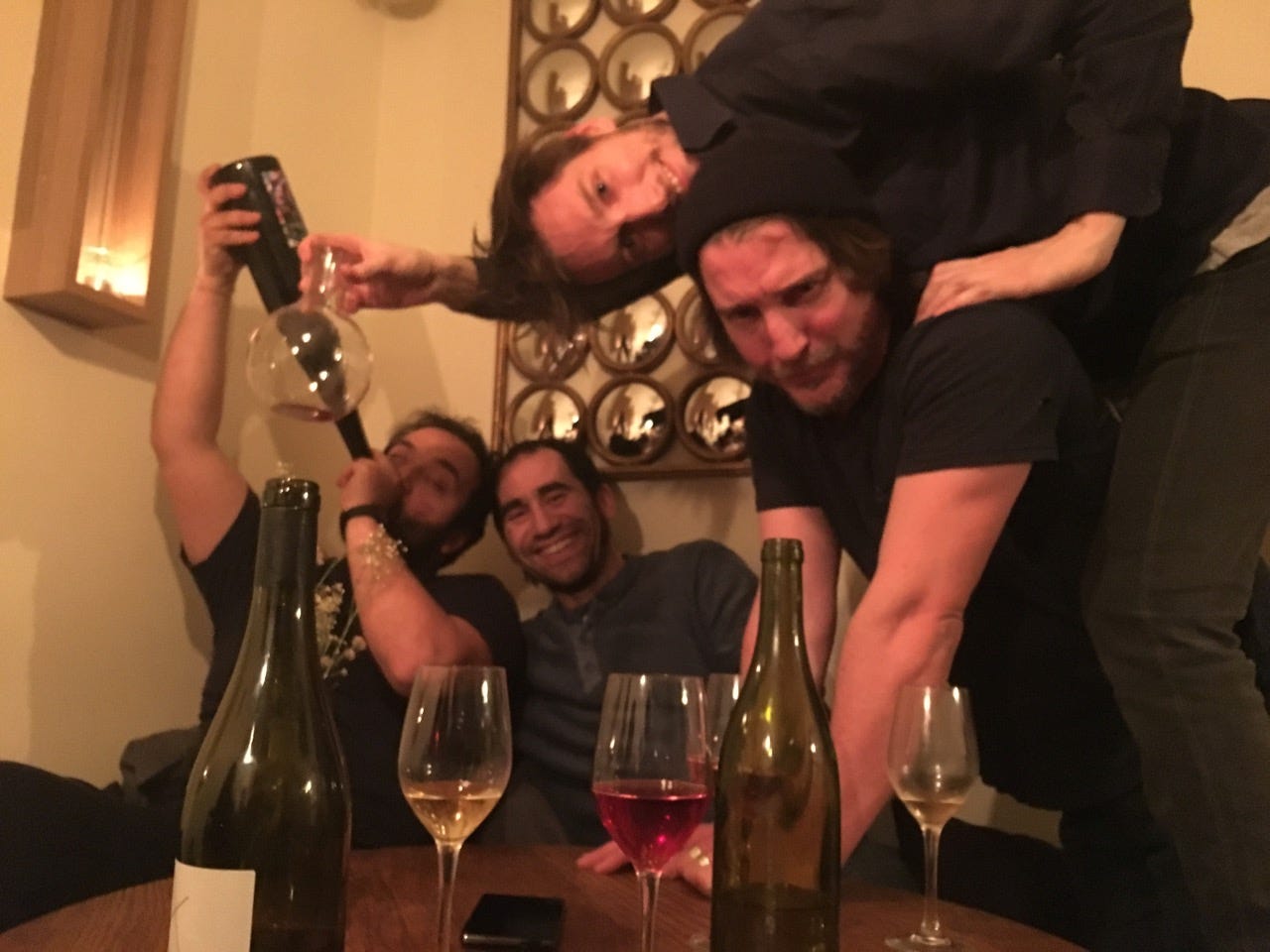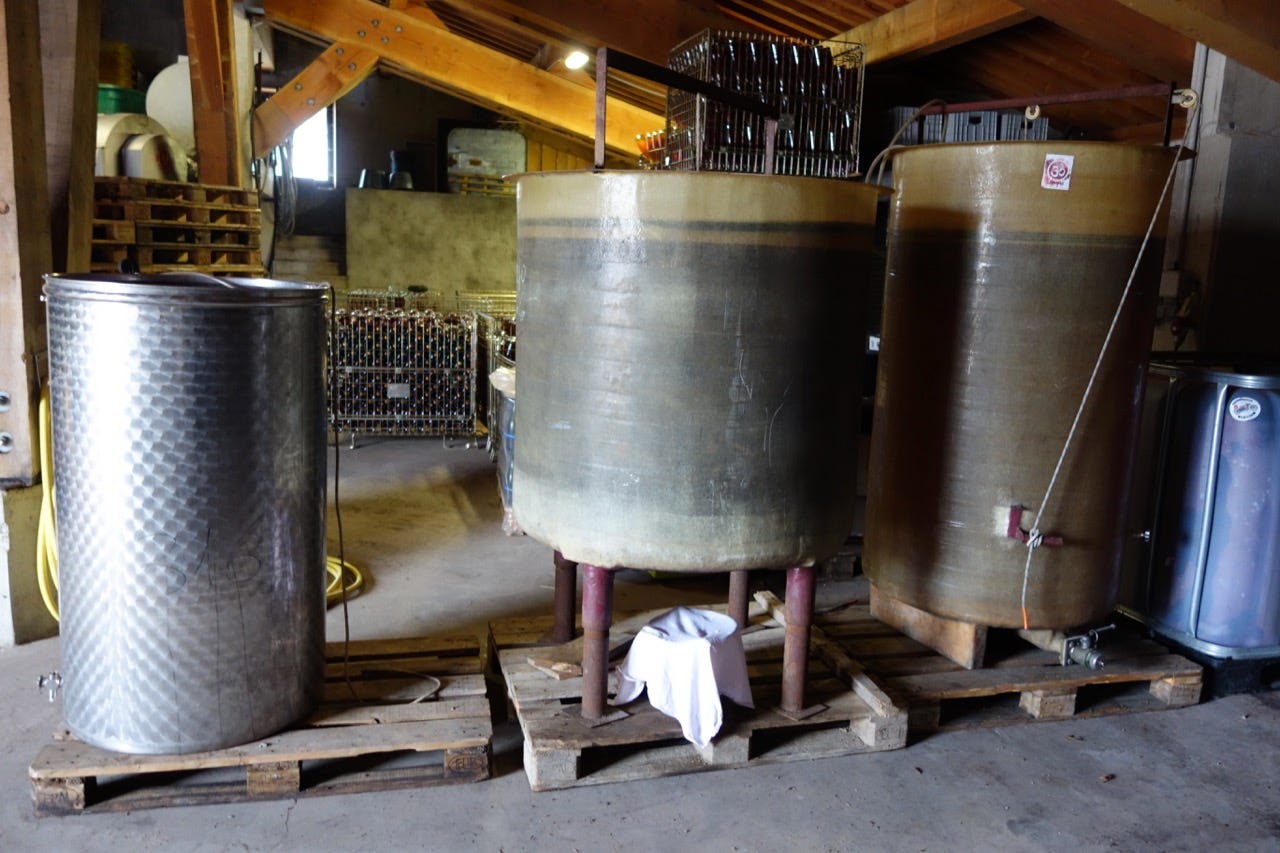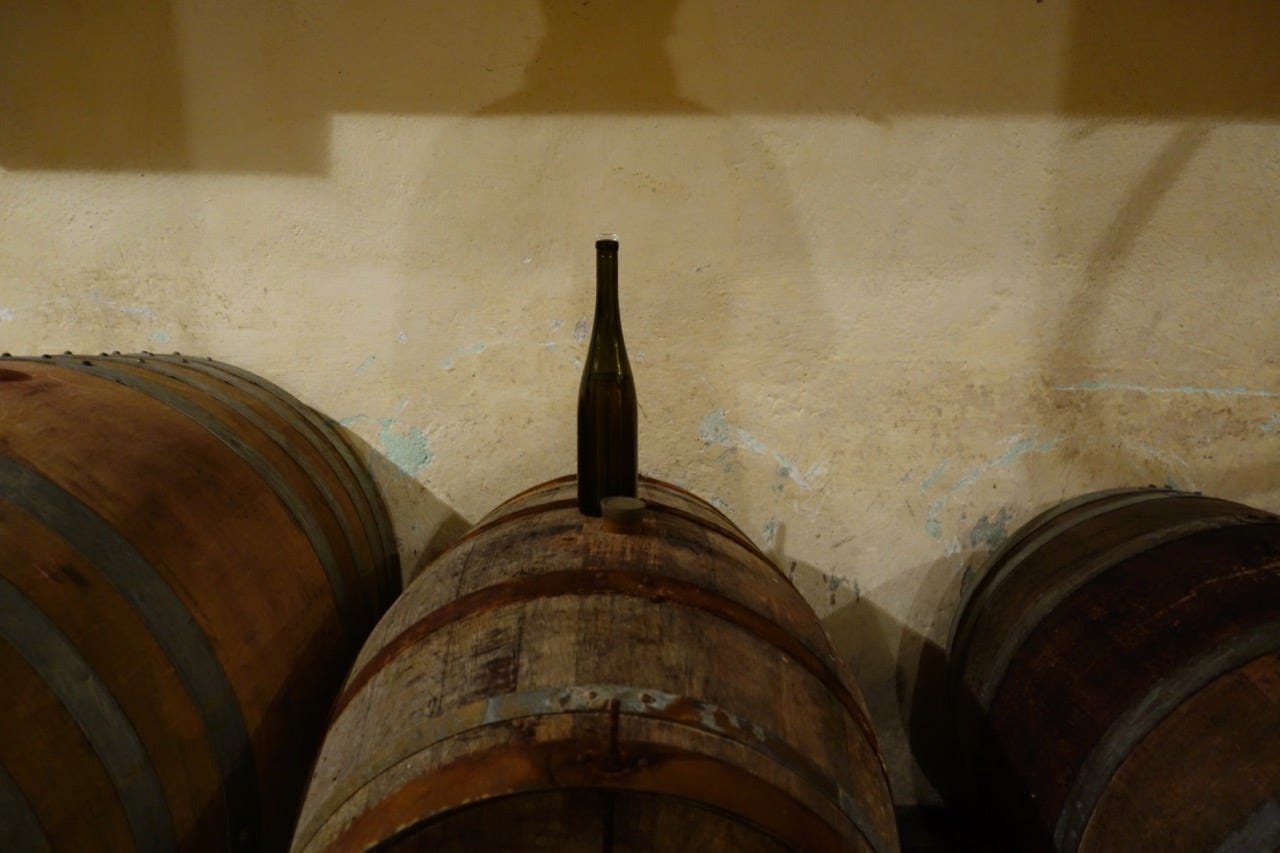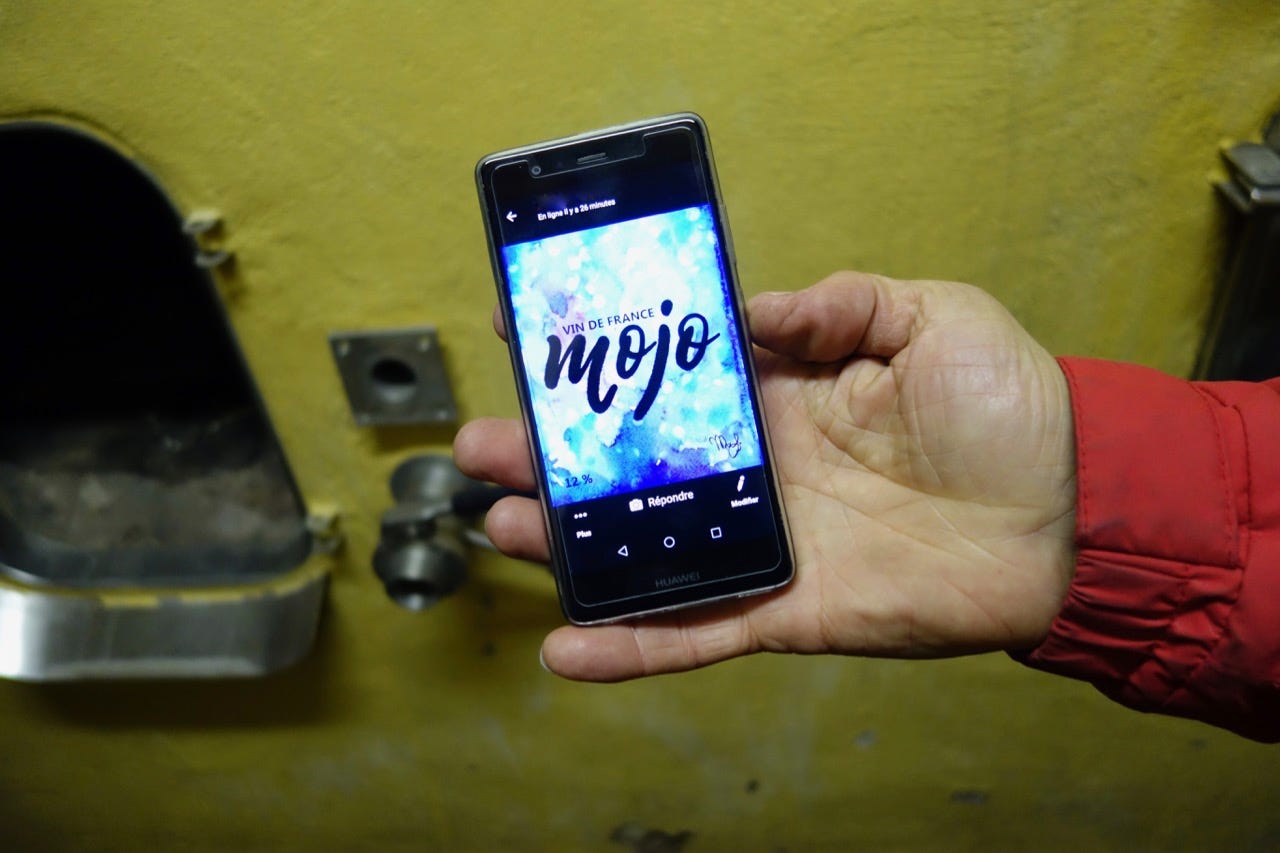ALSACE - Farid Yahimi aka Sons of Wine
Yahimi's range is a cabinet of curiosities, a realization of all the thought experiments he's dreamed up over the course of two decades in the natural wine scene.
For typical cellar visits in Alsace, I mentally prepare myself for an infinity of cuvées, often tasted from bottles that have been open and jangling around in a fridge for a month or more.1
Nothing, however, can prepare one for a tasting with Ammerschwihr-based, pan-regional organic négoçiant Farid Yahimi - for his idiosyncratic young natural winemaking operation Sons of Wine is unique in Alsace, and probably the world. Encompassing everything from a cross-European blend of verdejo and sylvaner to pinot gris barred-aged beneath the mediterranean sea, Yahimi's range is a cabinet of curiosities, a realization of all the thought experiments he's dreamed up over the course of two decades in the natural wine scene.
Yahimi is a peculiar contradiction, at once veteran and newcomer. Originally from Nancy, of Algerian / Kabyle background, he studied farming, before working in transport logistics and later digital communication. "My discovery of natural wine happened towards end of 1999, thanks to my cousin, who initiated me," he says. "Then I completely left the world of Bordeaux, Burgundy, the classics we all know."
He encountered the wider French natural wine scene at Marcel Lapierre's famous méchoui parties. In 2005 he was among the founders of the Association de Vins Naturels, and helped in administrating the controversial, fairly unmanageable organisation until 2014. In 2017, after several years of winemaking experiments in his garage, he founded his négoçiant business in the former cellar of his friend Christian Binner. (Binner had moved the vast majority of his own winemaking operation to a new bioclimatic structure in 2012.)
I first met Yahimi in February, through Guillaume Dupré at the haute-Marais wine bar Goguette, where the latter hosted a party to celebrate the release of the former's pineau d'aunis. In a flourish characteristic of both Yahimi's boundless energy and his endearing affection for gimmicky, he had bottled the wine that morning, labeled the day's date on the bottles, and driven them directly to Paris for sale that evening.
I finally had the chance to taste more of Yahimi's own wines this past March, on one of two jaunts through Alsace with a Chinese importer friend. We found Yahimi in fine nattering form, and spent the morning passing between Binner's bioclimatic building, where most of Yahimi's whites and reds were stored in a variety of small tanks, and Binner's former cellar, where most of Yahimi's many skin-macerated cuvées sat in concrete tank, along with a smattering of stray barrel experiments.
Any attempt to enumerate the Sons of Wine range would probably be both exhausting and incomplete, for Yahimi made something like twenty-one micro-cuvées in 2018. Skin-macerated whites predominate, as do reds in a short-macerated style he unabashedly describes as "glou-glou." For his skin-contact whites, too, Yahimi emphasizes drinkability, conducting macerations of just over a week. "I do these short-macerations so that we don't have the drying-out effect of the maceration," he says, "So we can drink them within the year."
Pinot gris is the breakout star of skin-maceration, here as elsewhere (chez Frick, chez Binner, etc.), attaining a captivating balance of juiciness and grip. Yahimi titles his cuvée "Skin Contact," with a ribald label depicting a giant wineglass held upside down between a shapely disembodied derrière. (The cuvées "Skin Contact - S" and "Skin Contact - R" bear almost identical labels and refer to wines made in same method with sylvaner and riesling, respectively.) Gewurztraminer also fares well, in a voluptuous cuvée that sees slightly shorter maceration entitled "GW Inspiration."
Another highlight is a kind of brilliantly failed rosé entitled "Mojo," which we tasted from tank. It began as a base of direct-press grenache gris, which magically and for no discernible reason attained a deeper colour with the addition of a proportion of direct-press sylvaner. The final effect is a piercing, invigorating light red with just the barest hint of a southern accent. (The grenache gris came from near Béziers.)
The handsome steel spheres upon which Yahimi can be seen clambering in the lead photo above are tanks repurposed from milk production. One contained a cuvée entitled "Perception," a blend of pinot gris and muscat ottonel. "Inside the fermentations are truly bizarre," he says. "It makes a type of chaos, it gurgles and mounts in the tank. I think it must do similar things to the concrete eggs chez Patrick Meyer, it gives movement in the interior."
At some point in our peregrinations back and forth between the two cellars, Binner's sister Béatrice gently interrupts to remind us lunch is almost ready. As soon as she returns to the kitchen Yahimi asks us, "Would you like to taste the wine aged under the sea?"
"Sure, if there's time - " I begin.
"Of course you would!" he beams. "It's like asking a blind man if he'd like to see!"
Where many domaines practicing undersea elevage (Raul Perez, Bisson) conduct it on bottled wine, Yahimi had submerged an entire barrel, in the manner of Château Larivet Haut-Brion's cuvée "Neptune." He suspended his own barrel off in the mediterranean near Narbonne in April 2018, returning to retrieve it eight months later, bottling it in early November. Asked to guess the grape variety, we suppose gewurztraminer, purely on the basis of the wine's weight and extraction. Yet it has a filigreed salinity, a granularity, all its own.
"It's pinot gris!" Yahimi reveals, sourced from Stéphane Bannwarth in Obermorschwihr. "The caudalie is monstrous. You put it in the mouth and it takes you very, very far."
The effect, he explains, is attributable to the movement of the tides on the barrel's contents. "The permanent bâtonnage of lees - the lees all the time in movement - it works the wine."
Most available literature about undersea élevage - which is to say, most press releases and recaps of press releases - tends to focus on its notional kinship with wine stocks rediscovered amid shipwrecks. This is marketing hokum. I suspect a more apt (if still imprecise2) comparison would be to the effect of water transport on barrelled wine. Before the advent of widespread rail transport in France, which to say well into the early 1900's, most wines were literally 'shipped'; this coincides with the era in which most wine was transported in barrel, on lees more or less fine. This would imply that the concept of permanent bâtonnage - at least during the weeks or months of water transport - was fairly widespread at a certain time, and surely contributed to a wine's final character.
We finished Yahimi's undersea pinot gris over choucroute with the Binners at lunch. That I'm still thinking about it long after testifies, I suppose, to the real value of Yahimi's more fantastical experiments.
Farid Yahimi / Sons of Wine
2, rue des Romains
68770 AMMERSCHWIHR
FURTHER READING
My report of 2018 harvest with Christian Binner at Sprudge Wine.
A 2018 piece I wrote on Goguette, 75011.
A great October 2018 piece on Farid Yahimi at L'Alsace.fr.
An interesting 2016 round-up on underwater wine aging at VinePair. The author takes a decidedly industry perspective, emphasizing hygiene concerns and the debate about whether the practice is economically advisable.
After each wine the typical Alsatian winemaker invariably poses the question, 'Guess how long this has been open?' 'Forty-two days!' he or she often continues. 'And it's still basically alive. Can you believe it?' It's not really the fault of Alsatian winemakers, it is just how they have adapted to the dynamic of having a zillion cuvées and a steady flow of non-pro tourists on the route des vins.
There remains the critical variable of airtightness. A barrel of wine undergoing constant stirring by the tides in a water-sealed environment would in theory lose less CO2 than one stored in the hold of a ship. But then again I have very, very limited experience in these matters.

